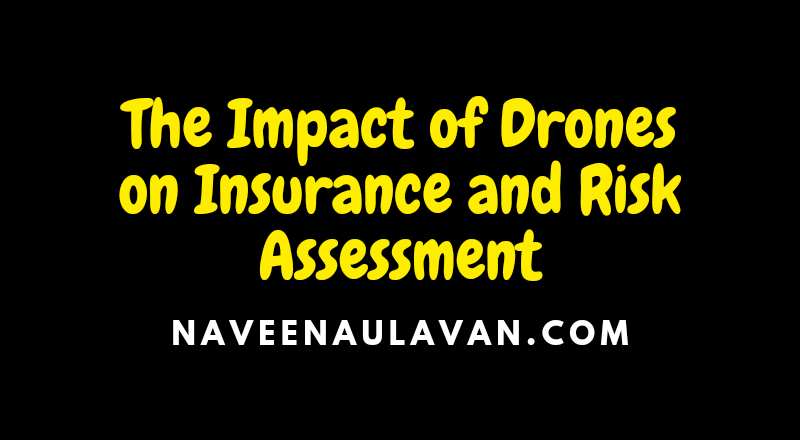In recent years the use of drones has seen a significant rise across various industries including the insurance sector. Drones also known as unmanned aerial vehicles (UAVs have proven to be a valuable tool for insurers in risk assessment claims processing and policy underwriting. With their ability to capture high-quality images and videos drones have revolutionized the insurance landscape by providing a more efficient and accurate way to assess risks. In this article we will explore the impact of drones on insurance and risk assessment highlighting the benefits they bring to the industry.
1. Enhanced Risk Assessment
Drones offer insurers a unique vantage point by allowing them to survey properties evaluate potential risks and gather detailed information for underwriting purposes. Traditionally insurers heavily relied on manual inspection and physical surveys to assess risks which often involved time-consuming processes and increased exposure to potential hazards. With drones insurers can now conduct aerial inspections capturing high-resolution images and videos of properties and locations in a much shorter time frame. This not only improves efficiency but also reduces the risks associated with physical inspections.
2. Faster Claims Processing
One of the significant advantages of using drones in the insurance industry is the expedited claims processing they enable. After a disaster or an accident insurers typically send adjusters to the site to assess the damage and validate the claims. However in many cases these on-site visits can be delayed due to accessibility issues or safety concerns. Drones overcome these limitations by providing insurers with real-time aerial footage of the incident site allowing for a quicker assessment and processing of claims. This technology eliminates the need for adjusters to be physically present at every site optimizing the claims handling process.
3. Accurate Property Assessments
Drones equipped with high-resolution cameras and sensors can capture detailed images and data of properties aiding insurers in accurately assessing their value and condition. Insurers can utilize this information to determine policy coverage evaluate premiums and identify potential risks. Additionally drones can assist in identifying pre-existing damages which helps prevent fraudulent claims. By using aerial imagery insurers can ensure a more precise evaluation of the property reducing the likelihood of inaccuracies in policy underwriting and claims settlement.
4. Enhanced Risk Mitigation and Prevention
Drones not only facilitate risk assessment but also contribute to risk mitigation and prevention strategies. Insurance companies can leverage drones to monitor areas prone to natural disasters or assess the safety of infrastructure projects. By conducting regular aerial surveys insurers can identify potential hazards and implement proactive measures to mitigate risks. For example drone inspections can be used to monitor the condition of structures such as bridges or buildings and detect any signs of deterioration or damage. This proactive approach minimizes the likelihood of accidents and helps insurers develop comprehensive risk management strategies.
5. Lower Costs and Improved Safety
The use of drones in the insurance industry also brings significant cost savings and improved safety. Aerial inspections performed by drones eliminate the need for manual inspections which often require extensive resources including manpower and equipment. By reducing the time and effort involved in physical inspections insurers can significantly lower operational costs. Moreover drones minimize the risks associated with inspecting high-risk or inaccessible areas such as rooftops construction sites or disaster-stricken locations. Insurers can now assess risks without exposing their personnel to dangerous situations thereby enhancing the safety of their workforce.
6. Future Implications and Challenges
As the use of drones in the insurance industry continues to evolve there are certain challenges and considerations that need to be addressed. Privacy concerns may arise as drones capture images of both properties and individuals. Insurance companies must ensure compliance with data protection laws and establish protocols for responsible data collection and storage. Additionally the adoption of drones in the insurance industry may require specialized training for staff and adjusters to operate and interpret the data gathered by drones accurately.
Conclusion
Drones have had a significant impact on the insurance industry particularly in terms of risk assessment and claims processing. Insurers can now leverage the capabilities of drones to conduct aerial inspections assess property value and identify potential risks more efficiently and accurately. The utilization of drones not only enhances risk mitigation and prevention but also reduces costs and improves the safety of insurance personnel. However to fully unlock the benefits of drones it is essential for insurers to address privacy concerns and equip their workforce with the necessary skills and knowledge. Overall drones have proven to be a game-changer for the insurance industry promising a more streamlined and effective approach to risk assessment and claims management.
